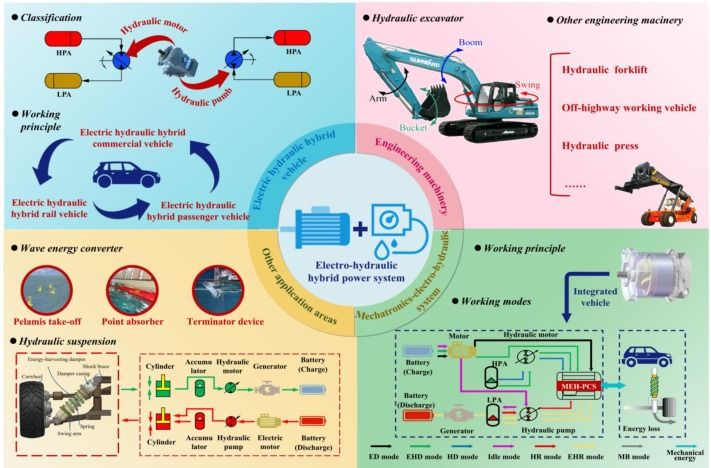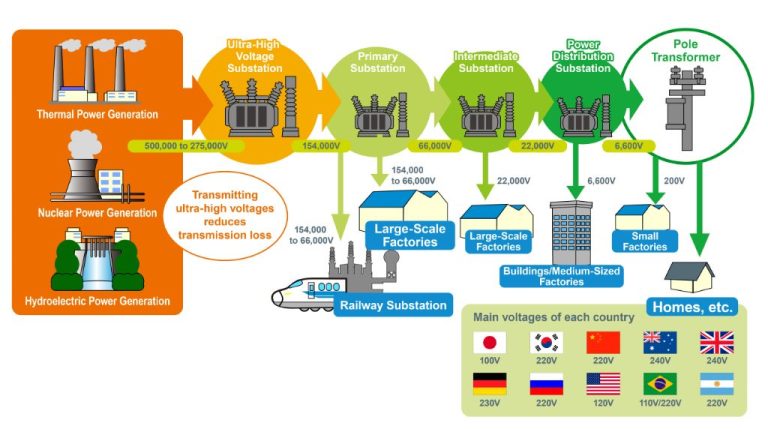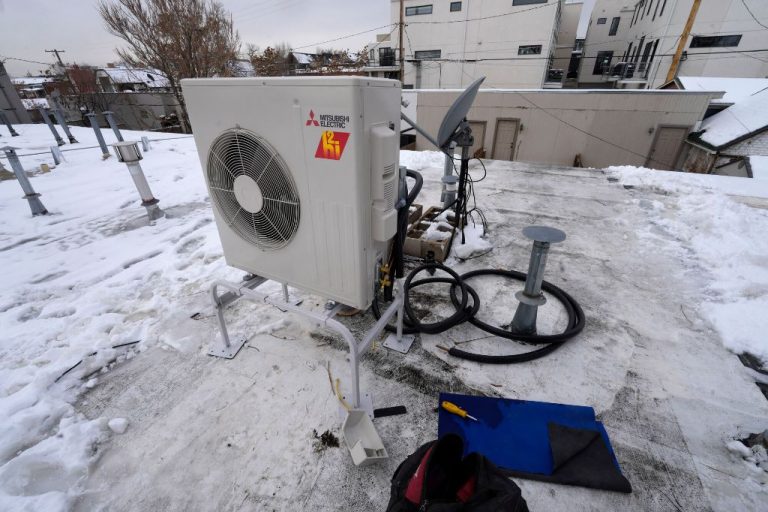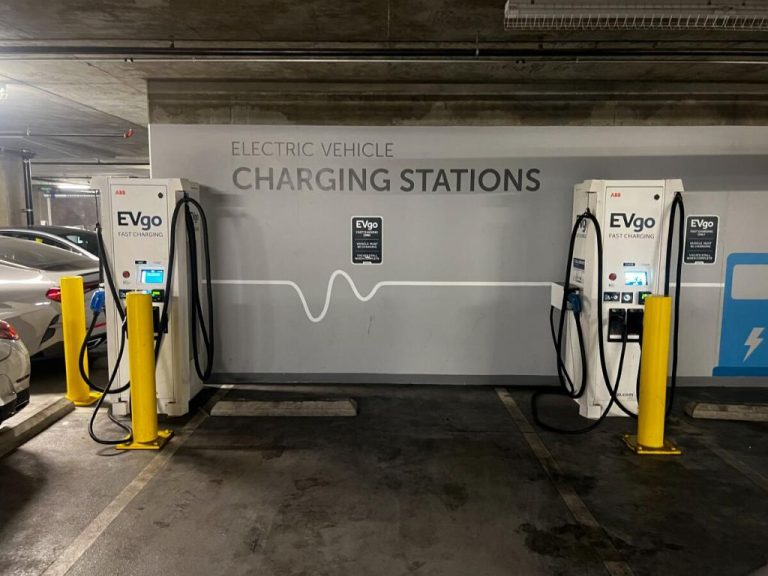Is There A Way To Turn Electrical Energy Into Kinetic Energy?
Kinetic energy is the energy possessed by a moving object, while electrical energy refers to energy derived from electric charges and their potential for movement through currents and voltage. Conversion between these two forms of energy is extremely common and useful in everyday life, science, and industry. This process allows us to harness the unique advantages of electrical energy, like long-distance transmission and precise control, while still being able to make use of kinetic energy to perform mechanical work.
Understanding how to efficiently and effectively turn electricity into motion provides capabilities that would otherwise be impossible. It enables everything from electric toothbrushes to high-speed rail networks. Methods of conversion continue to improve, allowing us to innovate new electric technologies and enhance existing processes. Examining this topic provides insight into a key link between two fundamental forms of energy.
Methods of Conversion
There are several ways to convert electrical energy into kinetic energy, which is the energy of motion. Some of the main methods include using motors, generators, electromagnets, and railguns.
Electric motors and generators work by creating a magnetic field that pushes or pulls on a rotor. As the magnetic field rotates, it causes the rotor to spin, converting the electrical energy into rotational kinetic energy. The rotor is attached to a driveshaft that can then power wheels, gears, or other mechanical systems.
Electromagnets can also directly convert electricity into linear kinetic motion. When a strong electric current flows through a coil, it generates a magnetic field. By alternating the current, the magnetic field rapidly switches polarity, pushing and pulling on nearby metallic objects. This allows electromagnets to accelerate or shoot metal projectiles.
Railguns take the electromagnet concept even further by running a high current between two rails. This creates a fast-switching magnetic field that can accelerate a projectile down the length of the rails to extremely high speeds. Railguns can convert electricity into incredibly powerful kinetic energy in a short distance.
Everyday Examples
Many common household appliances rely on the conversion of electrical energy into kinetic energy to perform their functions. Electric fans use an electric motor to spin fan blades and generate airflow. Blenders use electric motors to spin the blender blade at high speeds to blend ingredients. Even electric trains drive their locomotion by using electricity to power motors that turn the train wheels.
Beyond home appliances, there are numerous large-scale examples of electrical to kinetic energy conversion. The electrical grid powers electric motors that run factory assembly lines. Subway systems convert massive amounts of electrical energy into the kinetic energy needed to move subway cars. Electric vehicles like Tesla’s operate by using electricity stored in batteries to drive electric motors connected to the wheels.
In all these examples, the fundamental process is the same. An electric current passes through a motor containing electromagnets that create a rotating magnetic field and cause a rotor to spin. This rotational kinetic energy generated by the motor is then used to perform useful work like spinning blades, driving wheels, or running machinery.
Advanced Applications
There are several cutting-edge and novel methods of converting electrical energy into kinetic energy that push the boundaries of physics and engineering.

One example is electromagnetic aircraft propulsion, which uses electromagnetic fields generated by electricity to propel vehicles. Rather than using mechanical parts like propellers or jet engines, charged particles are accelerated by magnetic fields to provide thrust. This has the potential to enable hypersonic flight speeds in the future.
Another advanced application is electromagnetic railguns. These use enormous amounts of electricity, often provided by capacitors or homopolar generators, to rapidly accelerate a projectile along magnetic rails. The projectile can reach speeds over Mach 7, delivering tremendous kinetic energy downrange. Railguns have possible military applications but also could be used for space launch in the future.
More exotic concepts like the EMdrive use electromagnetic microwave cavities to convert electricity into resonant frequencies that seem to produce a small amount of thrust. While controversial, if proven to work, such novel thrusters could enable advanced propulsion systems for space travel.
Pushing the limits of materials science, graphene aerogels and carbon nanotubes hold promise for designing efficient kinetic energy capture devices. By tuning their morphologies and coupling them with MEMS materials, micro-scale vibration and movement can be harvested into useful electrical power.
Researchers continue looking for breakthroughs in these cutting-edge domains that may unlock new ways to efficiently convert electricity into kinetic energy with powerful impacts across transportation, defense, space exploration, and energy generation.
Efficiency
The efficiency of electrical to kinetic energy conversion depends on the specific method used. Some common methods include:
Electric Motors
Electric motors convert electrical energy into mechanical (kinetic) energy very efficiently, often between 85-95%. Factors like motor size, design, and quality impact efficiency. Motors have improved greatly in efficiency over the past decades.
Generators
Generators can convert kinetic energy into electricity. Their efficiency varies based on factors like size, speed, and load. Typical ranges are 25-95%. Larger utility-scale generators tend to be more efficient than smaller units.
Piezoelectric Materials
Piezoelectric materials generate electricity from mechanical stress or vibration. Their efficiency is generally low, around 10-20%, but materials science advances may improve this.
Overall, electric motors tend to be the most efficient method for electrical to kinetic energy conversion. But efficiency depends greatly on the specific application and technology used. Continued research aims to improve conversion efficiency across all methods.
Historical Development
The process of converting electricity into kinetic energy has been utilized for over a century, with early pioneers paving the way for modern applications. In the 1830s, British scientist Michael Faraday conducted pioneering experiments demonstrating that electrical current could produce rotational motion. This discovery laid the scientific groundwork for constructing early electric motors.
The first widespread use of electrical-kinetic conversion came in the late 1800s with the development of electric streetcars, which used electricity from overhead wires to power internal motors. This allowed streetcars to move without reliance on horsepower. Throughout the early 20th century, electric motors became increasingly common in industrial machinery, home appliances, and transportation.
Key innovations like Nikola Tesla’s alternating current motor in 1888 dramatically improved the efficiency and practicality of electric-kinetic conversion. Advancements in motor and generator design in the 1920s further expanded applications. Today, electric motors and generators are ubiquitous, powering everything from tiny gadgets to high-speed trains.
The fundamentals of Faraday’s early experiments still form the basis for modern electrical-kinetic conversion, but engineering improvements over decades have honed this technology and enabled increasingly sophisticated applications.
Physics Principles
The physics behind converting electrical energy into kinetic energy relies on the interactions between electric and magnetic fields. Electrical energy refers to the movement of electrons, which have an electric charge. This charge can be used to generate magnetic fields. When magnetic fields interact with conductors such as wires that have electric current, they exert a force on those conductors. This force causes the conductors to move, resulting in kinetic energy.
To understand this more specifically, let’s look at a loop of wire placed in a magnetic field. An electric current is passed through the wire, so electrons are flowing through it. This current will generate its own magnetic field around the wire, according to Ampere’s law. When the wire’s magnetic field interacts with the external magnetic field, they exert forces on each other. The external magnetic field applies a force on the wire at a perpendicular angle to the current flow. This force causes the wire loop to rotate, converting the electrical energy into rotational kinetic energy.
We can also see this principle demonstrated in an electric motor. There are loops of wire called the rotor sitting within magnetic fields generated by the stator. Electric current is passed into the rotor, generating magnetic fields. The interaction of the rotor’s magnetic fields with the stator’s fields applies a torque that causes the rotor to spin. This is how electrical energy gets converted into the rotational kinetic energy that drives the shafts and gears of motors.
By clever configurations of conductors, currents, and magnetic fields, we can construct electric motors and generators that efficiently convert between electrical and kinetic energy. The same electromagnetic principles are involved whether turning electrical energy into motion or using motion to generate electricity.
Potential Benefits
There are many exciting applications where converting electrical energy into kinetic energy could provide substantial benefits. Some examples include:
-
Electric vehicles – Using electrical energy to power electric motors that propel the vehicle provides an emissions-free transportation alternative.
-
Renewable energy – Wind and hydroelectric turbines use kinetic energy from the movement of air or water to generate electrical energy. Being able to convert some of this back into kinetic energy creates a clean energy cycle.
-
Robotics – Precise movement and force application are necessary in robotics. Converting stored electrical energy into kinetic motion allows customized and adaptable robot designs.
-
Energy storage – Being able to efficiently convert electricity into kinetic energy and back creates opportunities for large-scale energy storage and load balancing of the electrical grid during peak demands.
-
Space travel – Stores of electrical energy could be converted into kinetic energy to provide thrust for space propulsion without heavy fuels.
Overall, the ability to interconvert electrical and kinetic energy unlocks many possibilities across transportation, renewable energy, robotics, energy storage, and space travel that can benefit society, the environment, and technological advancement.
Limitations and Challenges
While converting electrical energy into kinetic energy has many useful applications, it also comes with some inherent limitations and difficulties. Some key challenges include:
Energy Loss: Any energy conversion results in some loss of usable energy, often in the form of heat. This limits the overall efficiency of the process. Careful design and good insulation can help minimize losses.
Cost: Systems like electric motors and generators that enable this energy conversion can be relatively expensive to manufacture and operate. The rare earth metals often used in electric motors also carry supply chain risks.
Control: It can be challenging to precisely control the amount of kinetic energy produced from a given electrical input. This makes applications where precise speed or torque control are critical more difficult.
Maintenance: Mechanical movement and stresses within motor and generator systems leads to wear and tear over time. Regular maintenance and part replacement is required.
Safety: Spinning motors and generators as well as high voltage electricity can pose safety hazards if not properly enclosed, handled and operated.
While these limitations exist, ongoing technological advancements and innovative engineering design continue to improve the viability of electrical-to-kinetic energy conversion across many applications.
Conclusion
In conclusion, there are various methods for converting electrical energy into kinetic energy, from simple motors and generators in everyday devices to advanced turbine and rocket technologies. Efficient conversion allows us to harness the power and convenience of electricity to produce motion and mechanical work. The physics principles of electromagnetism and induction allow a generator to produce kinetic energy from electricity or let a motor or turbine convert kinetic energy back into electricity.
Understanding how to interconvert electrical and kinetic energy has been an important area of scientific and engineering development, enabling many modern technologies and conveniences. With further improvements in conversion efficiency and new applications, we can continue expanding how we utilize electricity to power movement and mechanics in our lives.
Overall, the ability to turn electrical energy into kinetic energy via motors, generators, and other methods provides versatility in how we produce, use, and store different forms of energy.





